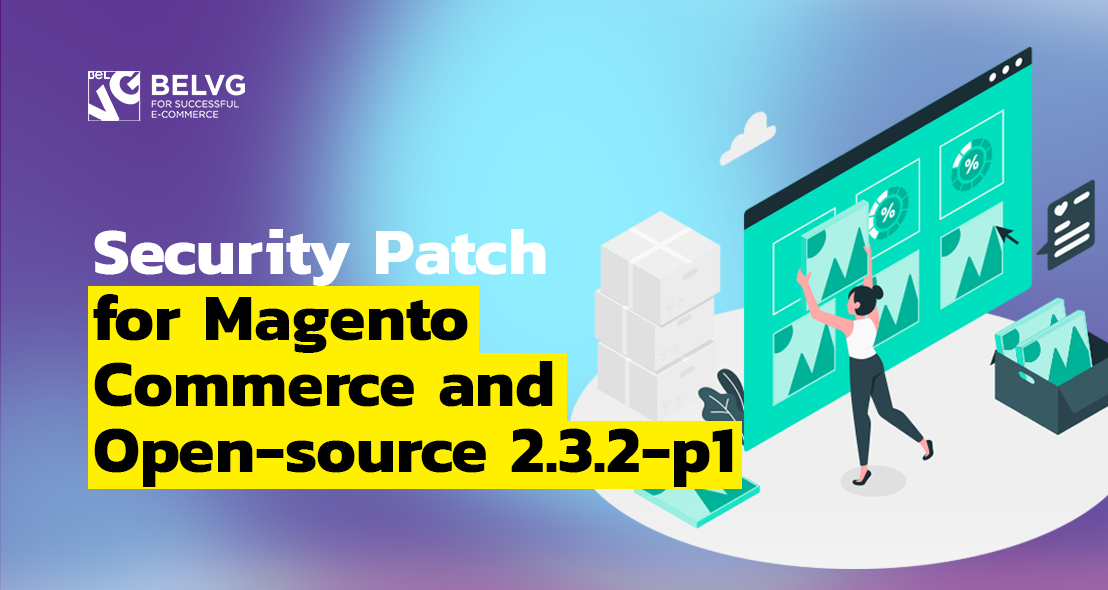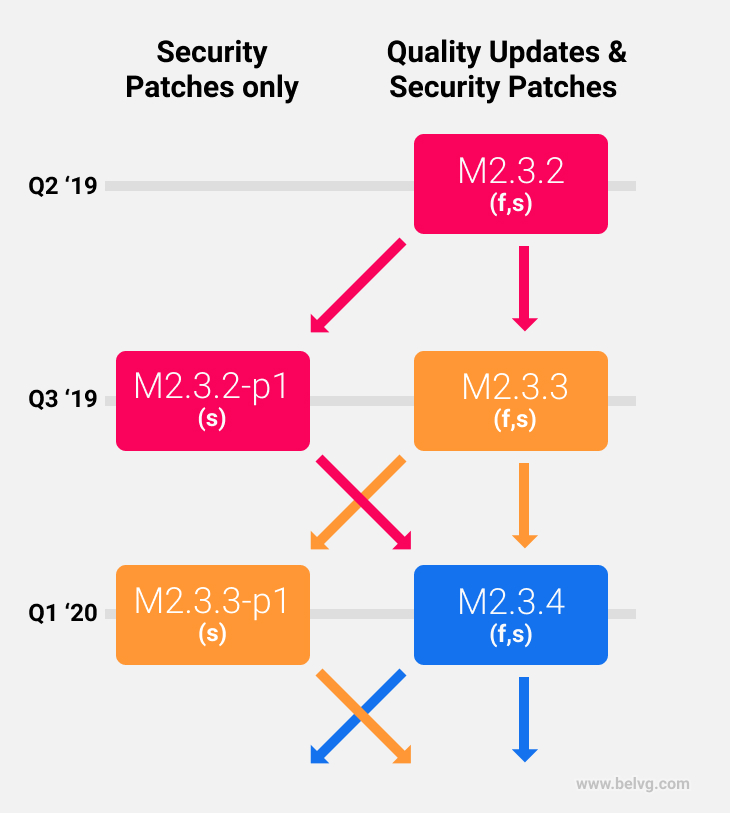
Security patch of an ecommerce platform is a package of modified core files that improve the downsides and fix the security issues that were discovered by the users and developers since the previous update. Learn more about Magento Commerce and Open-source 2.3.2-p1 security patch in this article.
Table of contents:
Why do You Need to Install Security Patches?
How Often does Magento Release Security Patches?
Why do You Need Magento Commerce and Open-source 2.3.2-p1 Security Patch?
Why do You Need to Install Security Patches?
There is a common misconception that giant multinationals are the only ones who could get their websites attacked by a hacker. Holding to such an opinion can be really costly. A company of any size and shape can get within a hacker’s line of sight. As you can imagine, installing a security patch is cheaper and easier than retrieving all the data and recovering the webstore after it was damaged or stolen.
Vulnerable website is an open door for hackers or page hijackers [1]. Security is especially critical in the times of the highest sales like during Black Friday which is already almost here – this biggest shopping frenzy of a year traditionally takes place at the end of November. As a business owner, you have to understand that you are the first one who is responsible for your webstore’s security and its proper functioning. Your job here is to find a reliable partner who will take care of your online store timely or manage security yourself.
How Often does Magento Release Security Patches?
Magento takes security seriously, and their team monitors the feedback provided by the users and developers on a daily basis. Since online fraud is turning more and more sophisticated, Magento is aware that timely security updates of the platform are musts.
The problem of online security was raised multiple times during such ecommerce conferences as Meet Magento events and Magento Contribution Days. The experts say that today since worldwide online fraud is getting more sophisticated, security patches have to be installed more often than ever before.
With respect to their clients, the Magento team reflects on the feedback and analysis of the latest ecommerce trends in order to keep their platform up-tp-date. Usually, the full platform updates and security patches in Magento are released according to the following pattern:
On October 8, 2019, Magento released a new version – Magento 2.3.3, and as they usually do, shortly after that, the security patch for the previous version – Magento 2.3.2 was released. The security-only patches are based on the previous major quality releases. These two separate releases allow the webstore owners to decide how they will upgrade their online stores. They can choose between directly switching for the new version or first installing the security-only patch and keep using the older version.
Why do You Need Magento Commerce and Open-source 2.3.2-p1 Security Patch?
The name of the security-only patch released for Magento Commerce and Open-source 2.3.2 is 2.3.2-p1. According to Magento, they have changed their approach to the security issue in general and increased their investment in security two times compared to last year. We can already say this investment pays off – with every update more and more bugs get fixed.
This 2.3.2-p1 security patch was developed in order to strengthen Magento-based websites worldwide before the Black Friday 2019. Installing Magento 2.3.3 requires some time and a security-only patch 2.3.2-p1 is a good solution for those who need a faster security upgrade. This patch provides the website owners with hundreds of functional fixes and improvements which are also available in Magento 2.3.3.
Wrapping it up
Hopefully, this article gave you a clear understanding of why Magento Commerce and Open-source 2.3.2-p1 security patch is needed, and why these security-only patches are important for the Magento community. Running an online store, you need to remember that you are responsible not only for the protection of your own website but also for your customers’ data safety. Do not let them down, and make sure that your online store meets the highest security standards.
[1] https://en.wikipedia.org/wiki/Page_hijacking






